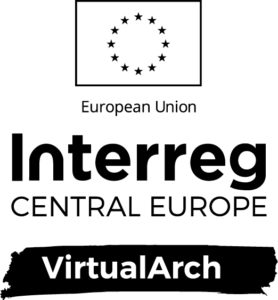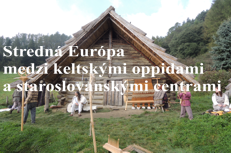 Cultural heritage is at the heart of what it means to be European and it is being discovered by both governments and citizens as a means of improving economic performance, people’s lives and living environments. Indeed archaeological (arch.) heritage is also now widely appreciated as an essential part of Europe’s underlying
Cultural heritage is at the heart of what it means to be European and it is being discovered by both governments and citizens as a means of improving economic performance, people’s lives and living environments. Indeed archaeological (arch.) heritage is also now widely appreciated as an essential part of Europe’s underlying
socio-economic, cultural and natural capital. This is a significant change in focus as the protection of arch. Findings and sites have traditionally been regarded as costs to society. Central Europe has a broad diversity of arch. Heritage partly excellently developed and utilized. However, a broad share of this heritage – even of international importance – is very often hardly visible and tangible for the public and faces increasing menaces. In addition, inherent potentials for regional development lie idle and are waiting to become unveiled. But only archaeology, as prime owner of
knowledge and information, may introduce those hidden pearls for economic use and implementation. Hence, Virtual Arch will contribute to a sustainable use and protection of non-visible and little known archaeological heritage underground or submerged by increasing the capacities of public actors in the field of archaeological heritage protection on presentation by introducing innovative visualization approaches and methods such as trend-setting ICT&Virtual Reality (VR) tools. This introduces hidden arch. heritage as stimulant for regional growth and employment
in new industries. Efforts to address valorization of invisible arch. heritage via visualization cannot be taken by countries and regions in isolation if they are to be effective. Participating regions are facing same challenges and
share same aims and objectives. However, local framework conditions, methods and techniques applied are still different. Transnational cooperation will support the development of respective solutions by development of standard procedures, common tools and knowledge exchange.
 There is a possibility to render and test new approaches for protection and improvement of cultural heritage on the examples from the Nitra agglomeration. These are the regions with quite heavy environmental impact in the past as well as nowadays on one hand (there is being built one of the largest industrial zones in Europe – Land Rover-Jaguar, Sony, etc., massive road constructions, new residential zones, etc.), and with extreme density of archaeological sites on the other hand. The pilot action would be target on first-rate modern documentation of archaeological sites, which are situated in the more or less accessible landscapes, as well as sites endangered by infrastructure activities (highways, trade parks). The pilot action would introduce the proceedings to the public how to apprehend the actual “not visible” heritage and utilize it for science, teaching but also for development of tourism, as well as for spatial development planning.
There is a possibility to render and test new approaches for protection and improvement of cultural heritage on the examples from the Nitra agglomeration. These are the regions with quite heavy environmental impact in the past as well as nowadays on one hand (there is being built one of the largest industrial zones in Europe – Land Rover-Jaguar, Sony, etc., massive road constructions, new residential zones, etc.), and with extreme density of archaeological sites on the other hand. The pilot action would be target on first-rate modern documentation of archaeological sites, which are situated in the more or less accessible landscapes, as well as sites endangered by infrastructure activities (highways, trade parks). The pilot action would introduce the proceedings to the public how to apprehend the actual “not visible” heritage and utilize it for science, teaching but also for development of tourism, as well as for spatial development planning.
Reconstruction of architecture
Lidar
Slovak research team:
Matej Ruttkay – leader, Anton Arpáš, Elena Bakytová, Branislav Balžan, Martin Bartík, Peter Bednár, Eva Čaprdová, Michal Holeščák, Michal Cheben, Tatiana Kmeťová, Jaroslava Ruttkayová, Anna Šupová, Barbara Zajacová
Partners:
1. Landesamt für Archäologie Sachsen, Germany, 2. Fondazione Bruno Kessler, Italy, 3. Naturhistorisches Museum Wien, Praehistorische Abteilung, 4. Außenstelle Hallstatt, Austria, 5. Uniwersytet Mikołaja Kopernika w Toruniu, Instytut Archeologii UMK, Poland, 6. Archeologický ústav AV ČR, Praha, v.v. i., Czech Republic, 7. Provincia Autonoma di Trento, Italy, 8. Zavod za varstvo kulturne dediščine Slovenije – ZVKDS, Slovenia, 9. Gmina Miasta Puck, Poland, 10. Grad Zadar, Croatia



